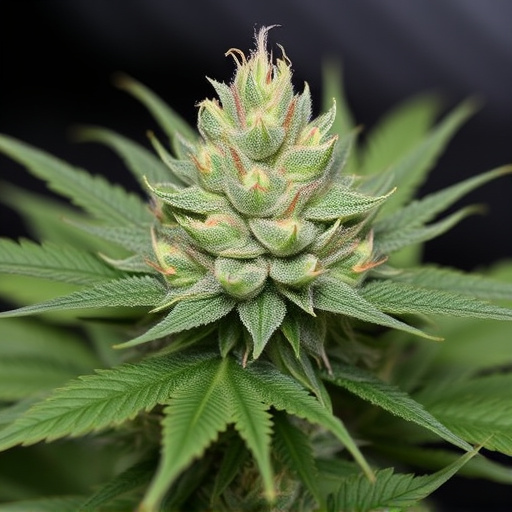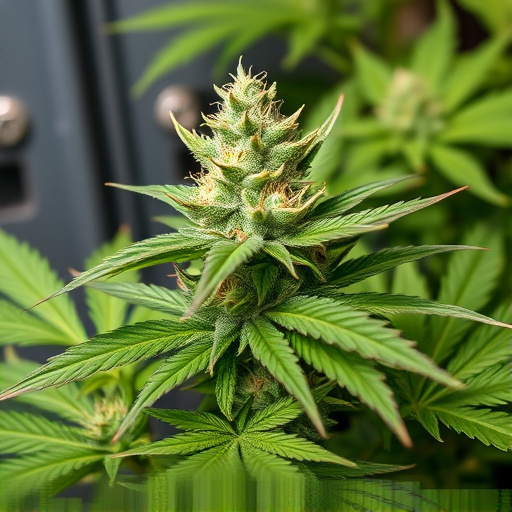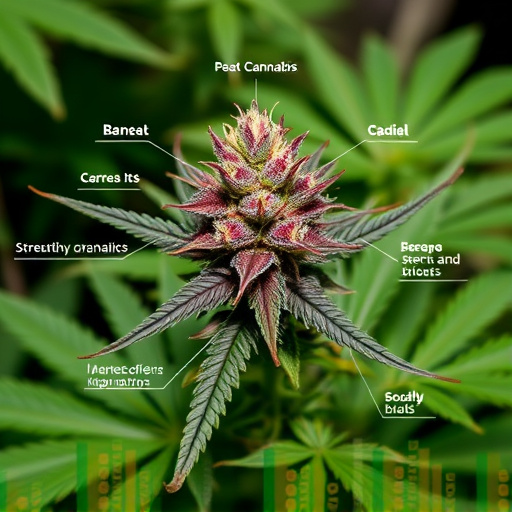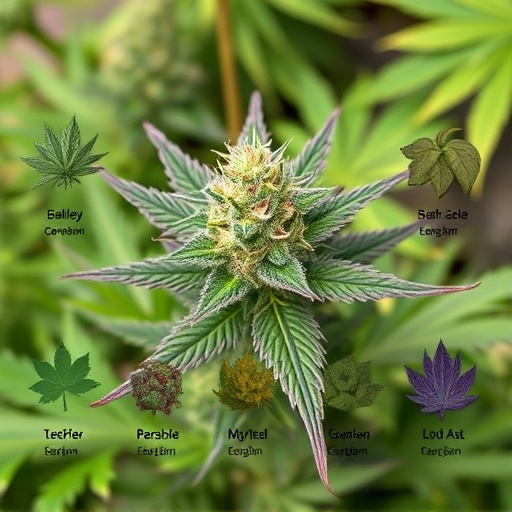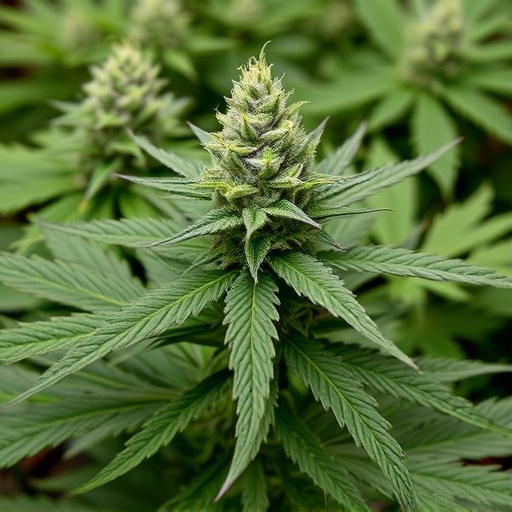Identifying cannabis strains is crucial for effective natural pain management due to their unique combinations of cannabinoids (THC, CBD) and terpenes. Higher CBD offers non-psychoactive pain relief, while THC provides stronger but potentially side-effect prone relief. Terpenes like myrcene can reduce inflammation. Balanced THC and CBD levels in strains work synergistically for optimal analgesic effects. Start with low doses, consult healthcare professionals, and consider edibles or topical creams for precise dosing and localized relief.
Cannabis flower has gained attention as a potential aid for managing pain, offering a natural alternative to conventional treatments. This article delves into the science behind its effectiveness, focusing on understanding the chemical composition of cannabis flowers and how they interact with our bodies. We’ll explore the role of terpenes and cannabinoids in identifying specific cannabis strains suitable for pain management. Additionally, we’ll guide you through proper use and dosage to ensure safe and effective pain relief using this versatile plant.
- Understanding Cannabis Flowers and Their Chemical Composition
- Identifying Cannabis Strains for Pain Management: Terpenes and Cannabinoids
- Effective Use and Dosage of Cannabis Flower for Pain Relief
Understanding Cannabis Flowers and Their Chemical Composition
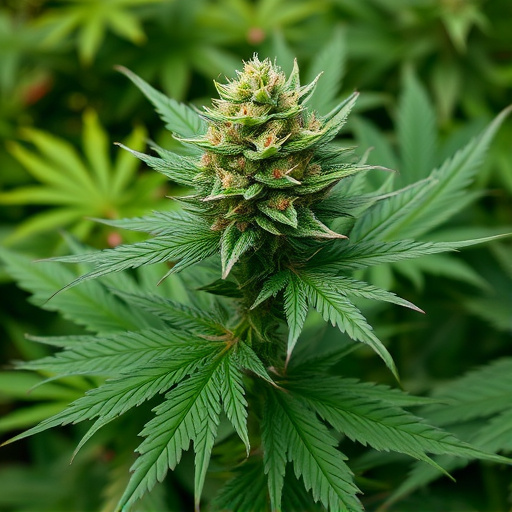
Cannabis flowers, also known as bud or marijuana, are the most commonly consumed part of the plant, rich in compounds that interact with our bodies’ natural systems. Understanding their chemical composition is crucial when it comes to alleviating pain. Cannabis contains over 100 unique chemical compounds called cannabinoids, with two main ones being THC (tetrahydrocannabinol) and CBD (cannabidiol). These cannabinoids bind to receptors in the body’s endocannabinoid system, which plays a significant role in regulating mood, memory, appetite, and pain perception.
Identifying cannabis strains is essential as each strain has a unique combination of cannabinoids and terpenes, contributing to different effects. Some strains are known for their higher CBD content, which may be preferred for managing pain without the psychoactive effects of THC. Others have higher THC levels, offering more potent pain relief but potentially causing side effects like heightened heart rate or anxiety. By understanding these chemical profiles, users can choose strains best suited to their individual needs and preferences when seeking natural pain management solutions.
Identifying Cannabis Strains for Pain Management: Terpenes and Cannabinoids
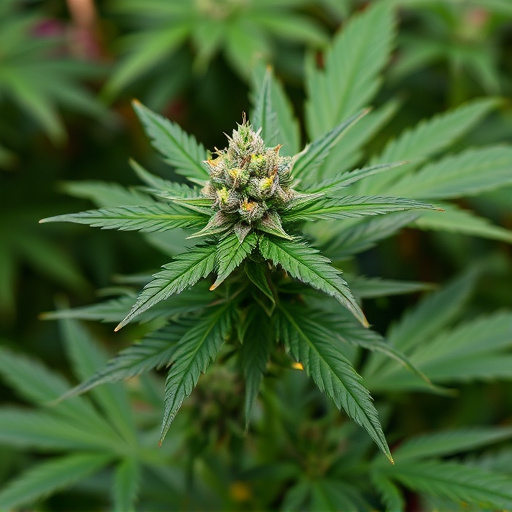
When it comes to using cannabis for pain management, one of the most effective strategies is to identify specific strains that offer analgesic properties. This involves understanding two key components: terpenes and cannabinoids. Terpenes are aromatic compounds found in many plants, including cannabis. Certain terpenes have been linked to reduced inflammation and pain perception. For instance, myrcene, a common terpene in cannabis, has shown promise in treating chronic pain conditions.
Cannabinoids, on the other hand, are chemical substances unique to the cannabis plant. The two most well-known cannabinoids are THC (tetrahydrocannabinol) and CBD (cannabidiol). THC interacts with the endocannabinoid system to produce feelings of euphoria and may help alleviate pain by binding to specific receptors. CBD, meanwhile, doesn’t produce a “high” but offers anti-inflammatory and analgesic effects without affecting cognitive functions. By identifying strains rich in these beneficial compounds, individuals can tailor their cannabis use for effective pain management.
Effective Use and Dosage of Cannabis Flower for Pain Relief
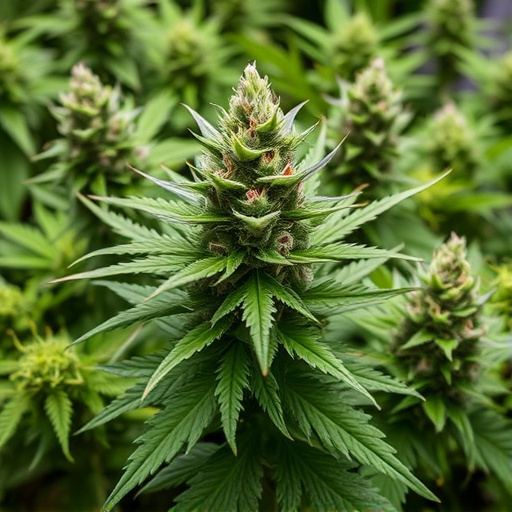
To maximize the benefits of cannabis flower for pain relief, it’s crucial to identify cannabis strains that are known for their analgesic properties. Effective use involves selecting a strain with a balanced combination of THC and CBD levels, as both compounds play complementary roles in managing pain. For instance, THC can interact with specific receptors in the brain to reduce inflammation and block pain signals, while CBD has anti-inflammatory and neuroprotective effects.
Dosage is another critical factor. Starting with low doses and gradually increasing allows for finding the right balance without experiencing adverse side effects. Edible cannabis products, like oils or capsules, offer precise dosing, making it easier to control the amount consumed. Topical cannabis creams and balms can also be effective for localized pain, providing targeted relief without the full-body effects of ingestion. Always consult with a healthcare professional before incorporating cannabis into your pain management regimen.
Cannabis flower offers a promising natural alternative for managing pain, with its unique chemical composition of terpenes and cannabinoids. By understanding the specific profiles of different cannabis strains, individuals can effectively identify those best suited for their needs in pain relief. Proper use and dosage, as outlined in this article, ensure safety and maximize the benefits of cannabis for chronic or acute pain conditions. Remember that, when used responsibly, cannabis can be a game-changer in navigating pain management.


